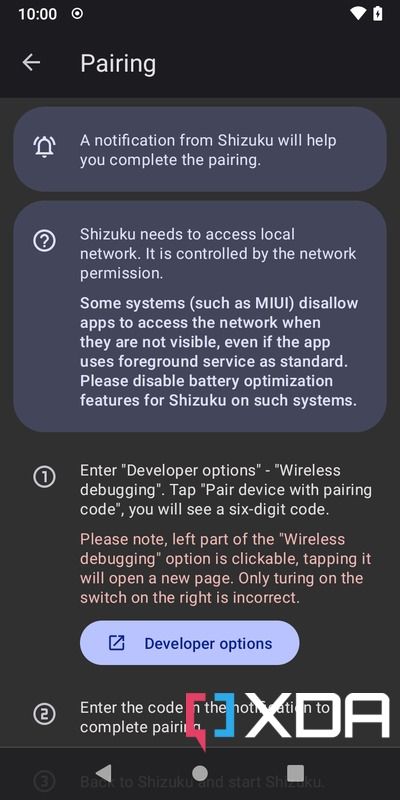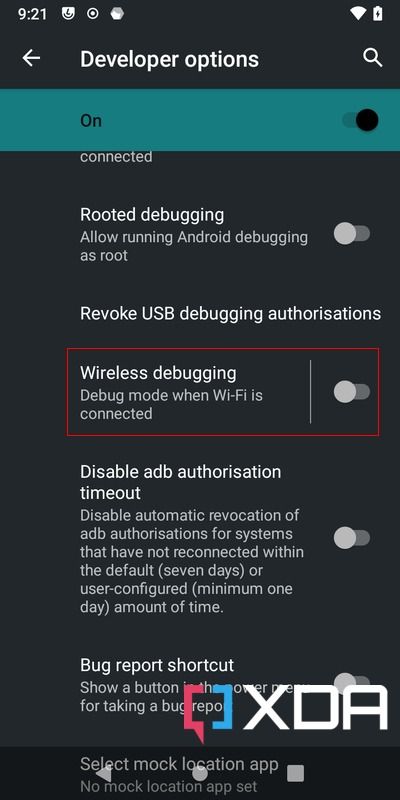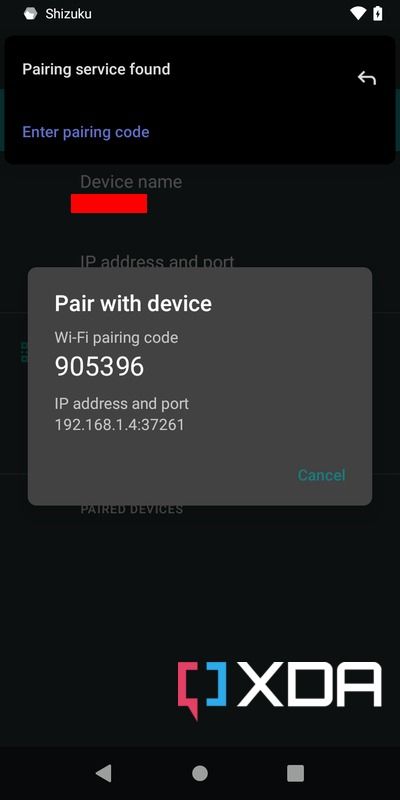 |
|
#1
|
||||
|
||||
|
What is Shizuku, and what can you do with it on your Android device?
What is Shizuku, and what can you do with it on your Android device?
The Android Debug Bridge, or ADB for short, is a handy development tool to interface with your phone for debugging and testing. Through ADB, developers and power users can access Android’s built-in Linux command line shell with greater privileges than user-installed apps. Notably, the ADB shell privilege is not equal to superuser access, hence you might still need to root your device to take complete control of the OS. However, depending on your modding requirements, the shell access is sufficient to grant or deny permissions, change system settings values, and do much more. This is where the Shizuku app comes into play. Navigate this article:
Shizuku is a nifty solution to tackle a rather complex scenario in the Android modding world: Allowing third-party apps to access system-level Application Programming Interfaces (APIs). The idea is to run a dedicated process with shell-level permissions, which acts as a proxy between the system server and the apps. Instead of relying on running commands in the su shell, developers can then utilize the Shizuku server component to perform elevated operations. In a nutshell, if an app needs special permissions that can only be granted through ADB (or with root), you can just use Shizuku to grant them right from your Android device. The Shizuku project is open-source, and it has been maintained by Rikka (aka RikkaW), Haruue, and several other developers. What are the features of Shizuku?
As mentioned earlier, the Shizuku project is open-source, hence you can take a look at the codebase or compile it yourself after grabbing the sources from its official GitHub repository. In case you are looking for the pre-compiled version of Shizuku, you can grab it directly from the Google Play Store. The developers also host several mirrors to make it easier to download the official APK release. Shizuku (Free, Google Play) ? How can I install and configure Shizuku? The Google Play version of Shizuku is installed by Android’s own package manager and it will continue to be updated by the Play Store. If you want to opt for the APK release from GitHub, then you need to manually sideload the package on your Android device. Although you can use Shizuku in a non-root environment, having root access drastically simplifies the process of setting up the Shizuku’s service. Follow along with the guide below to learn how to configure Shizuku with your choice of method. With root access Before installing Shizuku with root access, make sure you have the latest version of Magisk installed on the target device.
 By default, the Shizuku service doesn’t automatically start itself after a reboot. To change the behavior, tap the Settings icon in the upper right corner, then locate the Start on boot (root) option. Once enabled, the Shizuku service will execute without any user intervention after you reboot your device.  It is worth mentioning that the developers of the Shizuku project are working on an advanced front-end called Sui. It’ll eventually replace the current Shizuku app. To give it a try, download the latest release from its GitHub repo. Since Sui is designed as a Magisk module, you still need Magisk to run the app. Unlike regular companion apps, Sui doesn’t offer a typical app icon to start with. To access its interface, do one of the following:
 While Sui has its own potential, the project isn’t feature-complete just yet. Until the migration from Shizuku’s current app to Sui is officially greenlit, it is advised to use the main Shizuku app to configure different aspects of Shizuku. Without root access Starting with Android 11, Google added the wireless debugging feature to Android’s developer options. It can be used to configure Shizuku’s service on the target device without root access.
 Keep in mind that you need to enable the “Wireless debugging” option again and restart Shizuku after restarting the target device. It is also possible to invoke the Shizuku service via wired ADB access. This is particularly useful for older Android revisions, or some OEM Android skins where wireless debugging isn’t easily accessible. However, you need a PC/Mac with ADB installed as well as the OEM Android driver installed as prerequisites.
How to use Shizuku? If you?re familiar with Magisk, then Shizuku is quite similar. But instead of managing root access, it manages shell access. As a result, if you have a working Shizuku instance and then try to open an app that utilizes Shizuku to perform elevated operations, you should see a prompt to allow access. As soon as you allow it, Shizuku will seamlessly take care of the API access requirements. Below you can find a short list of popular apps that utilize Shizuku for elevated operations. This does not serve as an endorsement of the mentioned apps, nor are we suggesting that the work of others should be ignored. We are limiting what we link to in order to prevent this article from becoming too lengthy.
 Swift backup requesting Shizuku access Swift backup requesting Shizuku accessIn most of the cases, the apps will ask for Shizuku access during the initial setup phase. Once granted, they will expose the functionalities which require elevated access. In case Shizuku isn’t installed (or not configured), the apps will automatically choose the fallback mode with a limited set of features. It is also possible to use Shizuku in conjunction with on-device terminal emulator apps. This portion is beyond the scope of this tutorial, but you can explore this feature by tapping the “Use Shizuku in terminal apps” option on the main menu of the app. For the Android app development community, you can easily leverage the power of Shizuku. To do so, take a look at our explainer and check out the Shizuku API repo. Conclusion Rooting your Android device opens it up to a world of customizations, but it’s not always a feasible option. Unfortunately, as time goes on, and Google improves its tamper detection methods, there?s less and less space left to tinker about. The Shizuku app somewhat fills the void, which is great for the Android modding scene. Hopefully, we will see a plethora of apps and mods with native support for the Shizuku service in the near future. The post What is Shizuku, and what can you do with it on your Android device? appeared first on XDA. More... |
  |
«
Previous Thread
|
Next Thread
»
|
|
 Similar Threads
Similar Threads
|
||||
| Thread | Thread Starter | Forum | Replies | Last Post |
| Android 13 Custom ROM List: Unofficially update your Android device! | phillynewsnow | AVN News Feed | 0 | 10-28-2022 11:07 AM |
| Top 5 Essential Android Apps to Install After Rooting Your Android Device | phillynewsnow | AVN News Feed | 0 | 08-17-2022 11:34 AM |
| What is EdXposed, and what can you do with it on your Android device? | phillynewsnow | AVN News Feed | 0 | 05-07-2022 04:23 PM |
| What is Riru, and what can you do with it on your Android device? | phillynewsnow | AVN News Feed | 0 | 04-24-2022 11:15 AM |
| The How To Root-Android Device | puertoblack2003 | Article | 1 | 01-04-2010 11:51 AM |
All times are GMT -5. The time now is 06:02 AM.
|
Layout Options | Width:
Fixed
Contact Us -
SPJ Bulletin -
Archive -
Privacy Statement -
Terms of Service -
Top
| |























